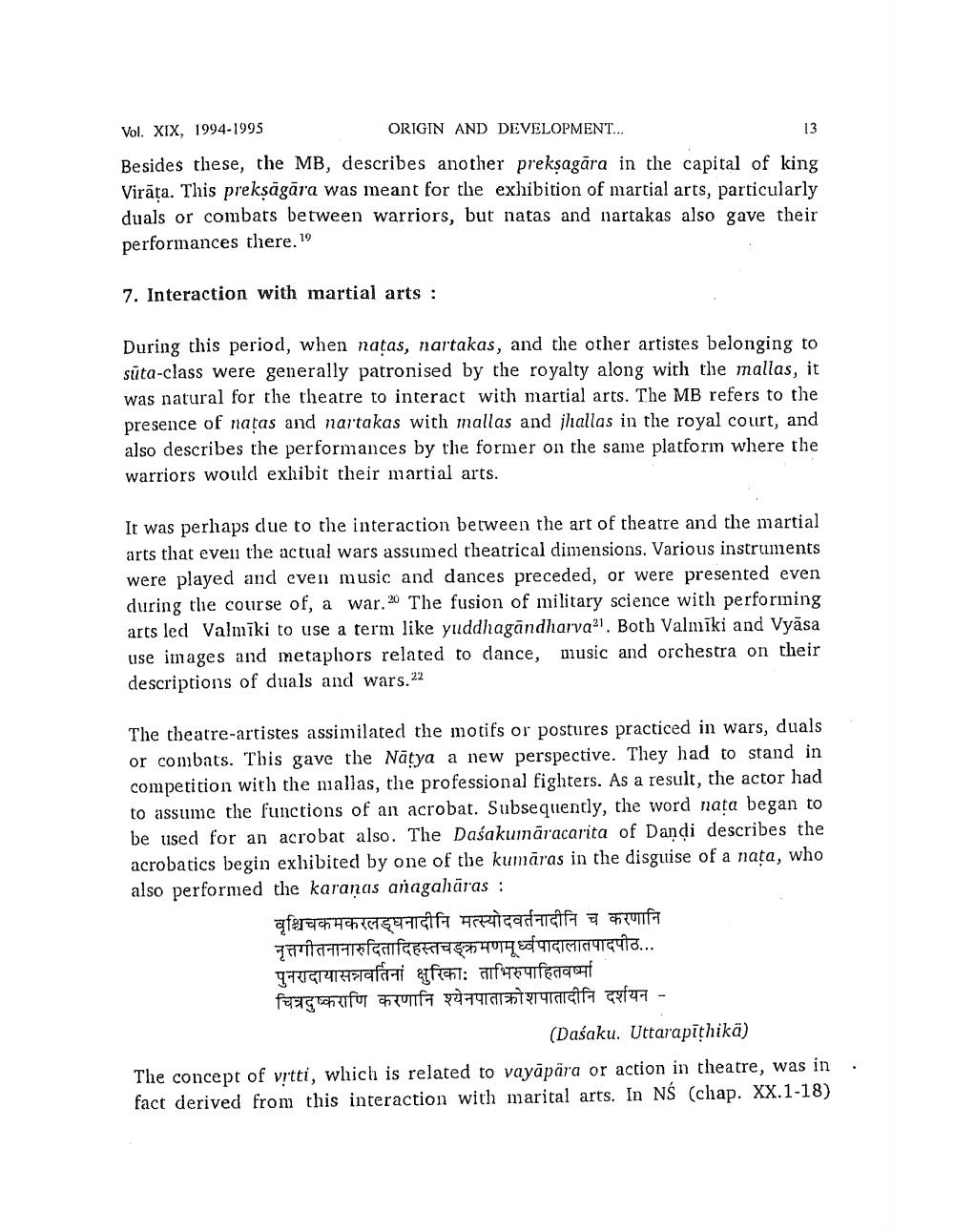________________
Vol. XIX, 1994-1995
ORIGIN AND DEVELOPMENT... Besides these, the MB, describes another preksagāra in the capital of king Virāta. This preksāgāra was meant for the exhibition of martial arts, particularly duals or combats between warriors, but natas and nartakas also gave their performances there. 19
7. Interaction with martial arts :
During this period, when natas, nartakas, and the other artistes belonging to sūta-class were generally patronised by the royalty along with the mallas, it was natural for the theatre to interact with martial arts. The MB refers to the presence of națas and nartakas with mallas and jhallas in the royal court, and also describes the performances by the former on the same platform where the warriors would exhibit their martial arts.
It was perhaps due to the interaction between the art of theatre and the martial arts that even the actual wars assumed theatrical dimensions. Various instruments were played and even music and dances preceded, or were presented even during the course of, a war.20 The fusion of military science with perforining arts led Valmīki to use a term like yuddhagāndharval. Both Valmīki and Vyäsa use images and metaphors related to dance, music and orchestra on their descriptions of duals and wars.22
The theatre-artistes assimilated the motifs or postures practiced in wars, duals or combats. This gave the Nātya a new perspective. They had to stand in competition with the mallas, the professional fighters. As a result, the actor had to assume the functions of an acrobat. Subsequently, the word nata began to be used for an acrobat also. The Dasakumāracarita of Dandi describes the acrobatics begin exhibited by one of the kumāras in the disguise of a nata, who also performed the karanas anagahāras :
वृश्चिचकमकरलड्धनादीनि मत्स्योदवर्तनादीनि च करणानि नृत्तगीतनानारुदितादिहस्तचक्रमणमूर्ध्वपादालातपादपीठ... पुनरादायासन्नवर्तिनां क्षुरिकाः ताभिरुपाहितवर्मा चित्रदुष्कराणि करणानि श्येनपाताक्रोशपातादीनि दर्शयन -
(Daśaku. Uttarapīthikā) The concept of vrtti, which is related to vayāpära or action in theatre, was in fact derived from this interaction with marital arts. In NŚ (chap. XX.1-18)
.




